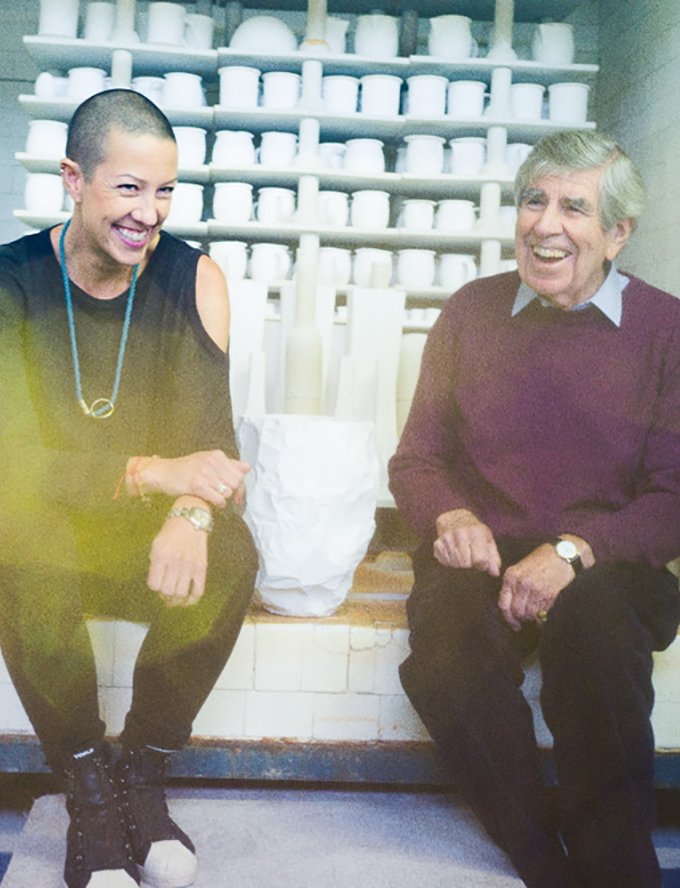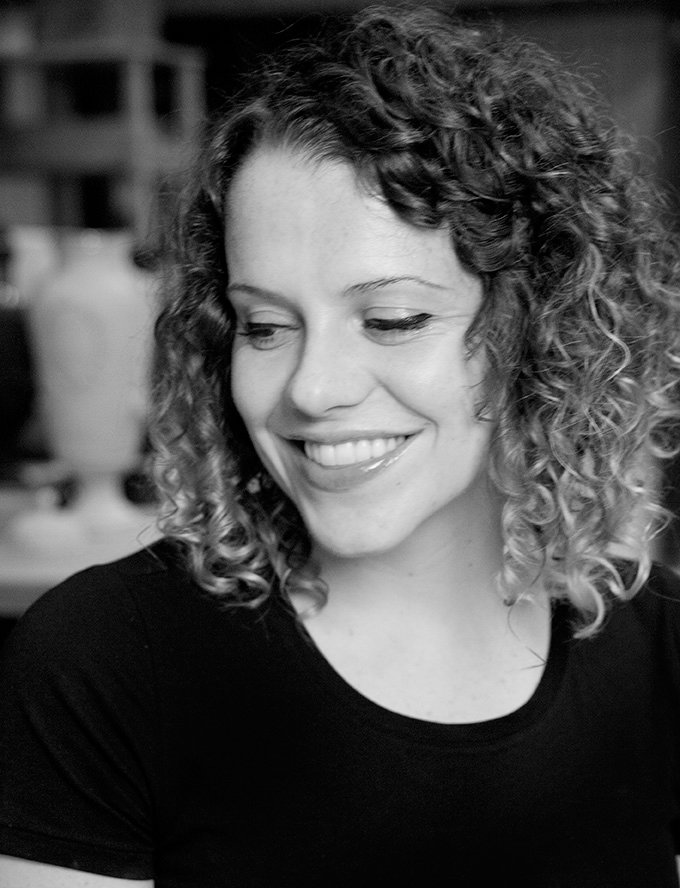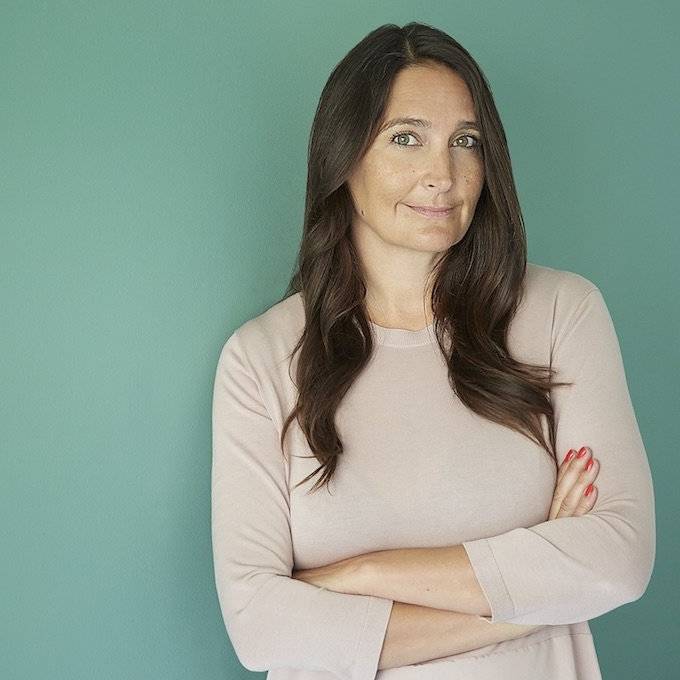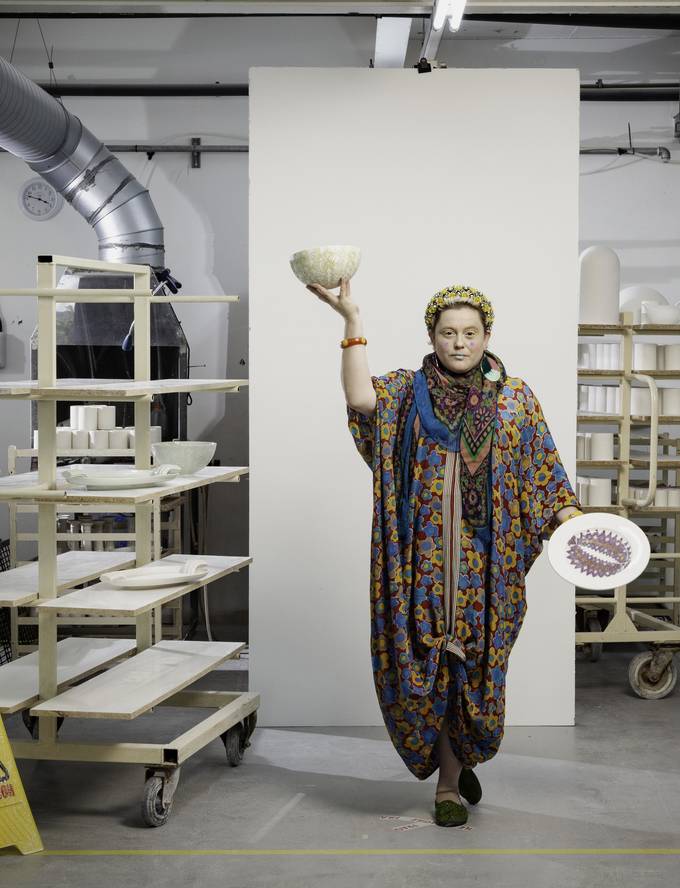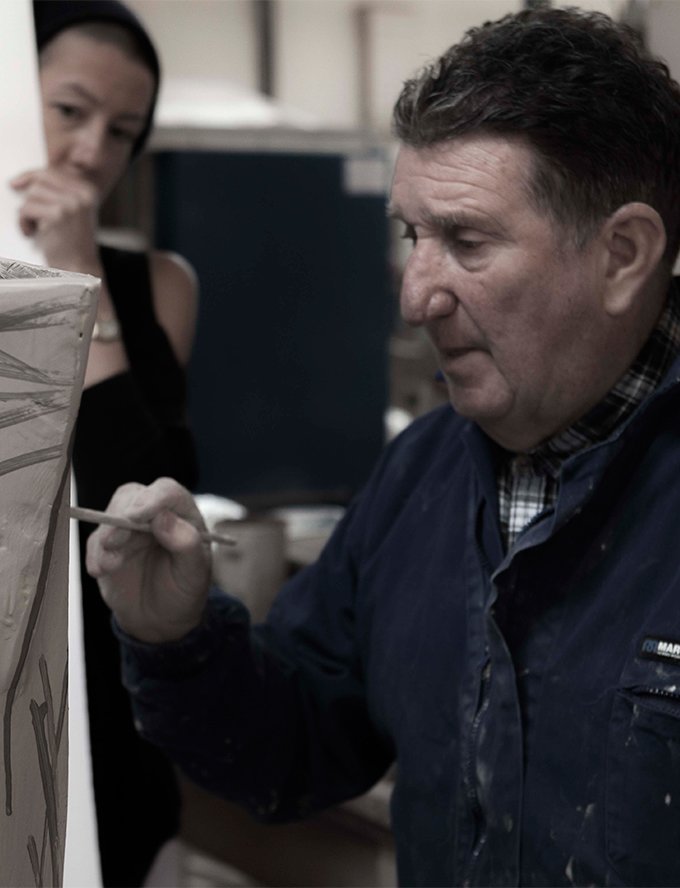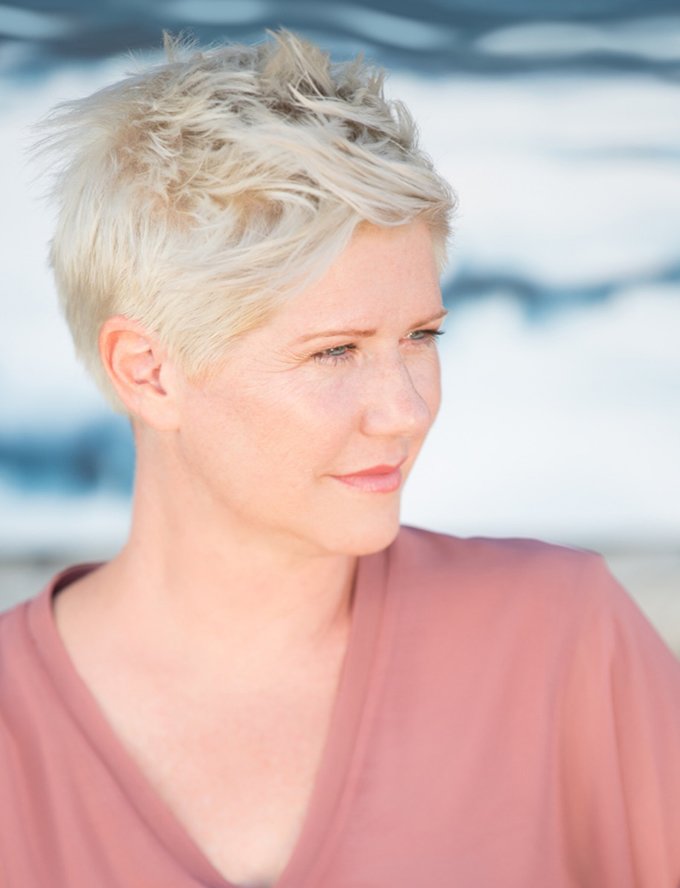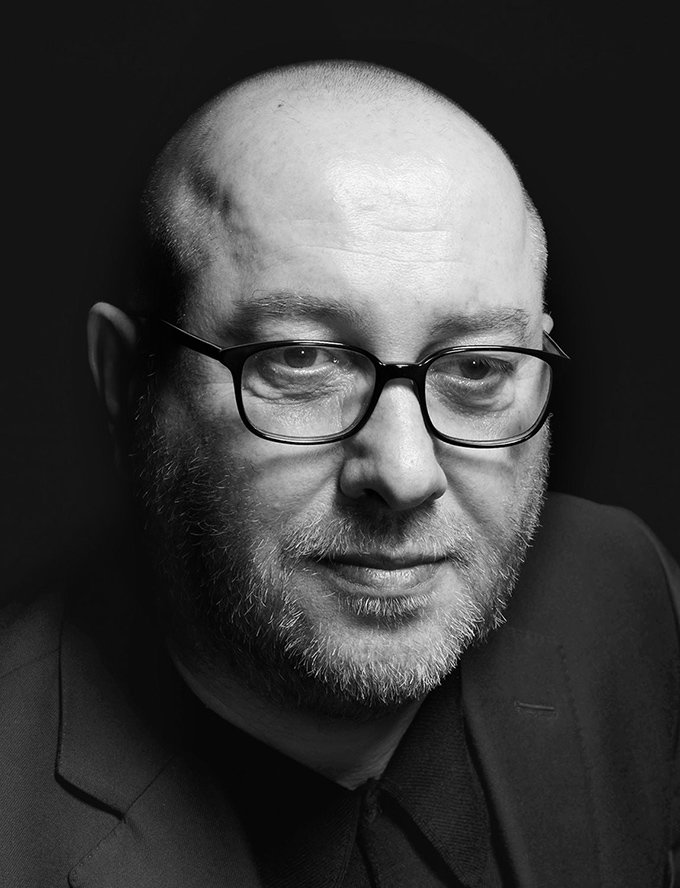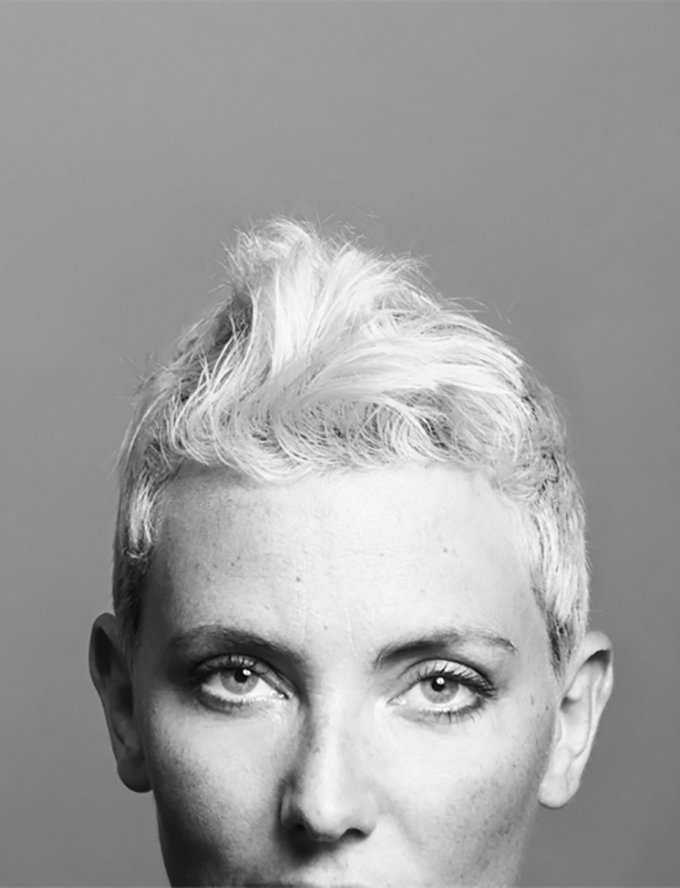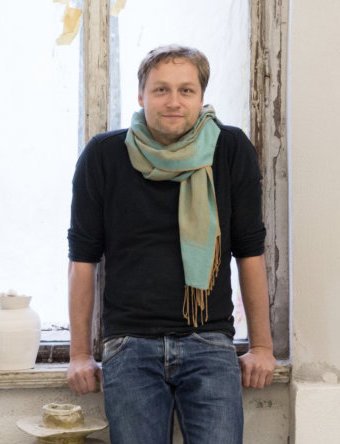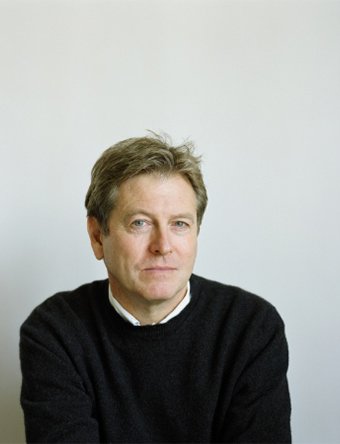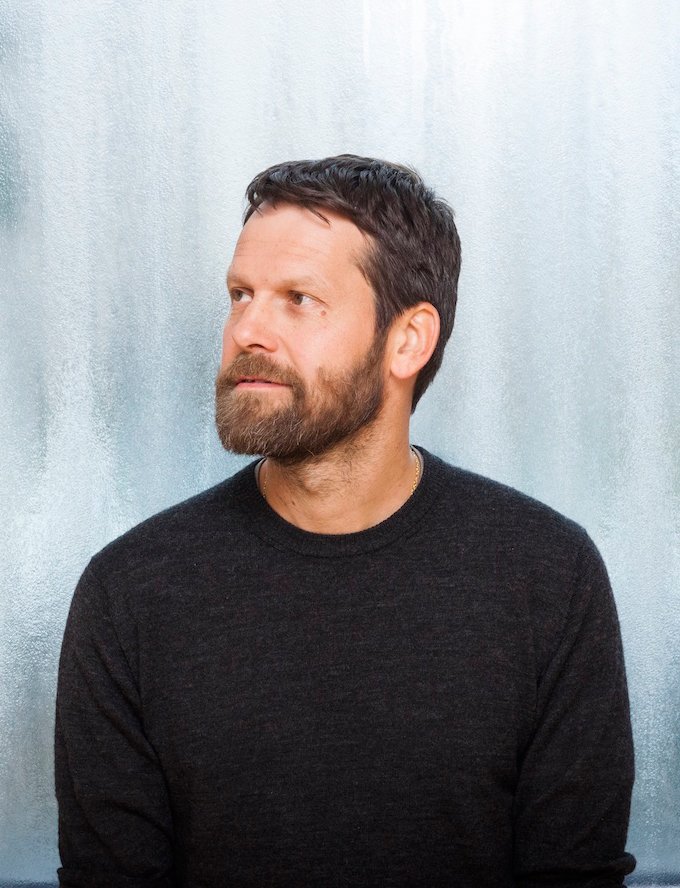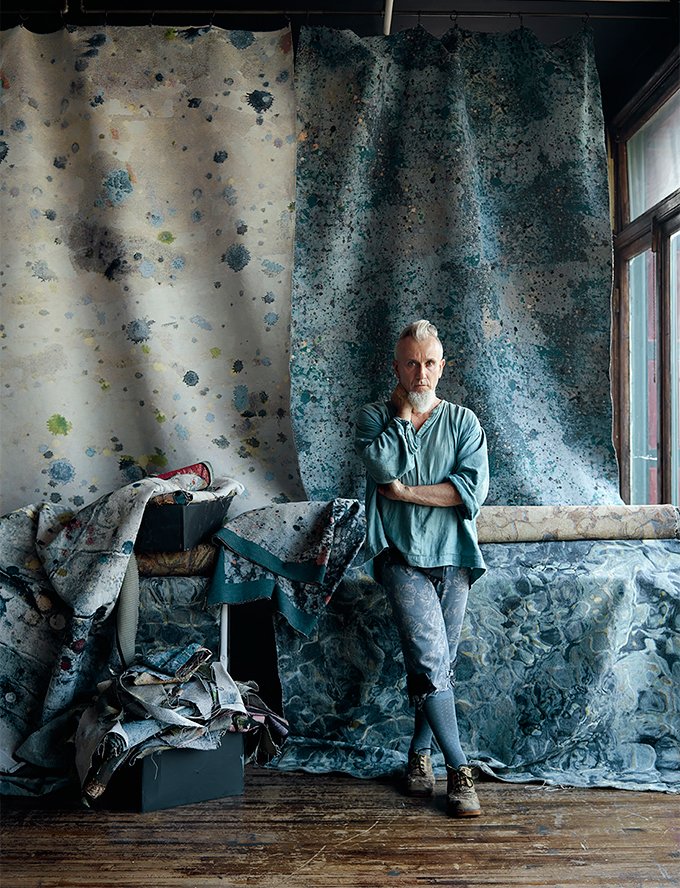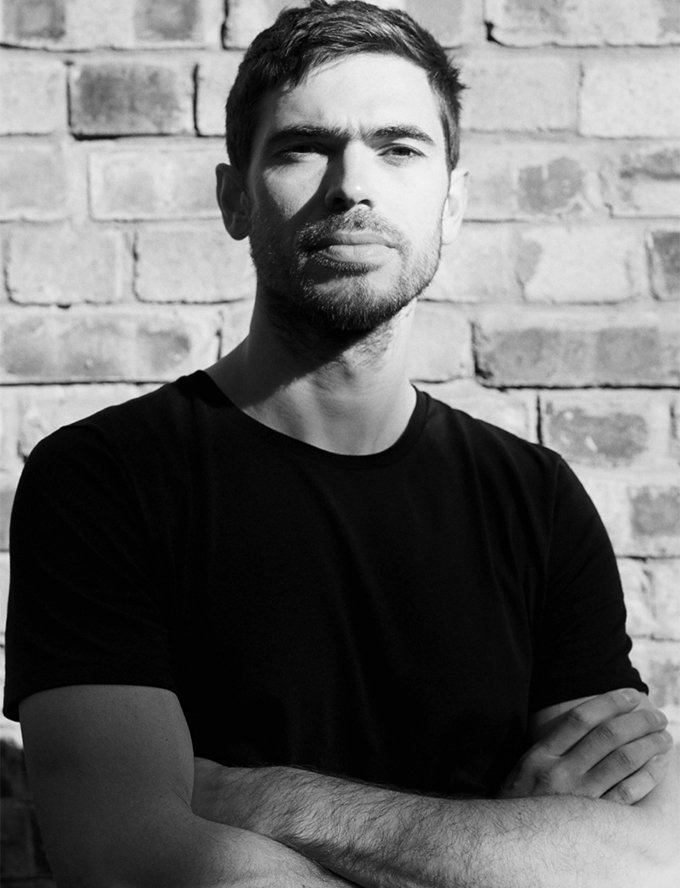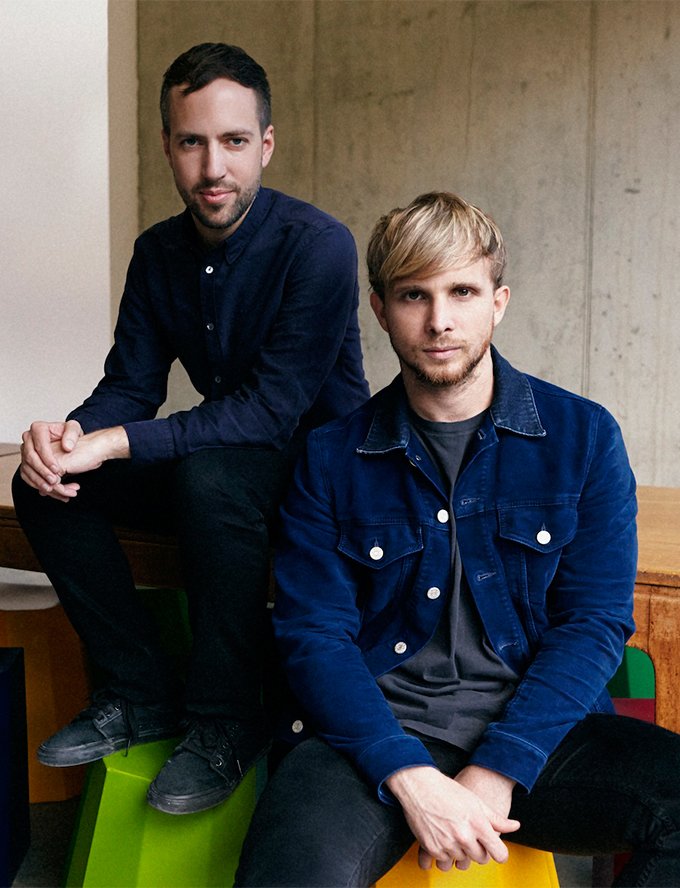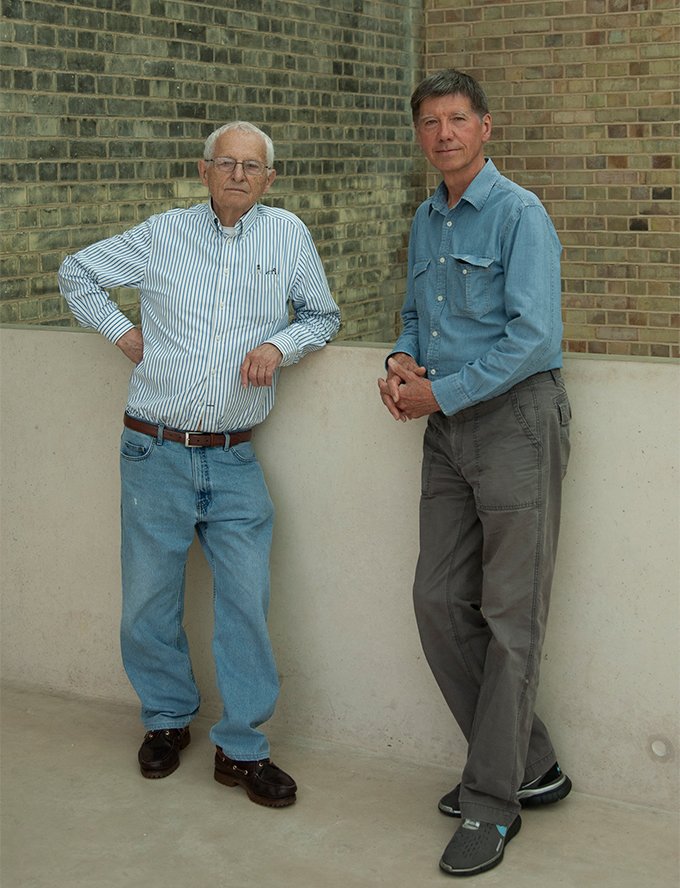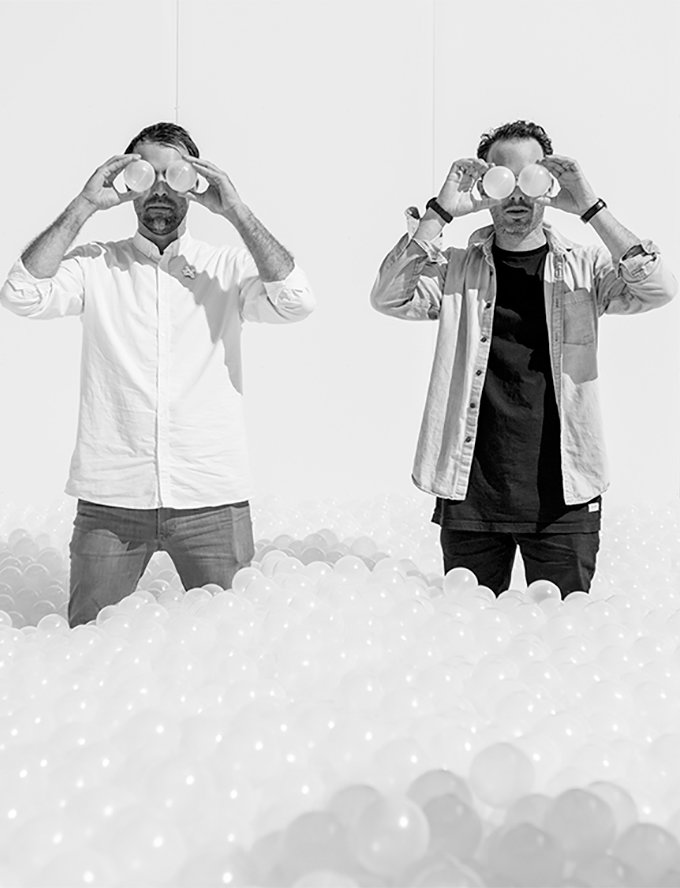1882 Ltd. works with the skilled craftsmen of Stoke-on-Trent alongside pioneering artists and designers to create innovative collections from works of art as well as functional, stylish tableware. We are known for our collaborations with both world-renowned talents as well as emerging creatives including Barnaby Barford, Max Lamb, Faye Toogood and Bruce McLean.
1882 Ltd.
1882 Ltd. was formed in 2011 by fifth generation Emily Johnson and her father, Christopher, who has worked in the industry since 1958. 1882 Ltd.’s mission is to champion inventively designed ceramic products from lighting to domestic ware to works of art whilst employing the manufacturing heritage of Stoke-on-Trent and promoting the British ceramic industry. Known for working with exceptionally talented designers, 1882 Ltd. have also designed collections themselves made possible through their expertise and understanding of the industry.
Amy J Hughes
Originally from West Yorkshire, Amy lives and works in London. She shares a studio with ten of her former classmates from the Royal College of Art, who collectively transformed a railway arch in East London into a multi-disciplinary art and design studio, known as Manifold.
Specialising in hand built ceramics and illustration, Hughes has worked and exhibited internationally, including a spell as Artist in Residence at Konstfack School, Stockholm, Sweden. She was nominated to represent the UK in ‘New Talent’ at the European Ceramic Context 2014 as well as being selected for the inaugural Young Masters Maylis Grand Ceramics Prize 2014 for artists who show an exceptional command of ceramics, alongside an awareness of the heritage of ceramic craft. In 2015, Amy was chosen as the first Ceramics and Industry Artist in Residence at the Victoria and Albert Museum working in collaboration with 1882 Ltd., as well as being selected as one of eleven artists for AWARD at the British Ceramics Biennial ‘presenting new works exemplifying the energy and vitality of the best of British contemporary ceramics practice.’ 2016, has seen Amy nominated for the fourth prestigious Perrier-Jouët Arts Salon Prize.
Bethan Gray
Bethan Gray’s ancestors went on an incredible journey across continents – Bethan has since visited many of the places they passed through, inspired by a love of travel, art and culture. Today, her mission is to bring contemporary relevance to the traditional techniques from these regions – keeping both cultural narratives and craft skills alive. A twenty-year veteran of the design industry, the award-winning Welsh designer established her eponymous studio in 2008, and now designs best-selling statement collections for global retailers and brands. Her private collections are sold through Lane Crawford, Liberty and Harrods; her work features extensively in global media; and she has exhibited in London, Milan, Paris and New York.
Bethan Laura Wood
Bethan Laura Wood has run a multidisciplinary studio since 2009 characterised by materials investigation, artisan collaboration and a passion for colour and detail. Residencies and location-based projects have become an important factor in her design process, often working in response to her location, in collaboration with local manufacturers, or reflecting back into her work the visual and material culture particular to that area. Bethan is fascinated by the connections we make with the everyday objects that surround us and, as a collector herself, likes to explore what drives people to hold onto one particular object while discarding another. Bethan explores these relationships and questions how they might become cultural conduits. She is interested in critical approaches to achieving sustainability within mass consumption and the production-driven context of the design industry.
Bethan Laura Wood obtained a MA in Design Products at the Royal College of Art, under the tuition of Jurgen Bey and Martino Gamper. Since 2011 she has worked with the prestigious Nilufar Gallery to showcase her self-directed, limited edition and one-off works. Bethan has been commissioned by and produced named collaborations with a variety of international partners including: Perrier–Jouët, Rosenthal, Abet Laminati, Moroso, Valextra, Kvadrat, Bitossi Ceramiche, Design Miami, Tory Burch, CC-Tapis, Tolix Peter Pilotto, Hermes and Dior. Her work has been exhibited in institutions including: Victoria and Albert Museum; Swiss Institute New York; Daelim Museum, Seoul; Museum of Contemporary Art, MOT, Tokyo; ICA London and the Design Museum London. Bethan has works included in the permanent collections of Wellcome Collection, London (Epidemic Jukebox in partnership with Kin design); V&A, London (Toothpaste bag for Valextra); Dresden State Art Collections, Germany (Friends bed); Abet Laminate Museum, Italy (Playtime table); and Mudac, Switzerland (Totem No.5) and most recently The Art Institute of Chicago (Stain) and SFMOMA (Criss Cross Kite).
Throughout her career Bethan has sought to engage with the educational system by teaching and delivering
lectures and workshops at many well-known universities including: RCA, ECAL and Central Saint Martins College of Art and Design. Bethan has been invited to run public workshops at Boisbuchet, V&A, Tate Britain, Vienna Design Week, IN Residence, Design Shanghai, and appeared as a guest speaker at many international fairs around the world from Tokyo to Toronto.
Bruce McLean
Bruce McLean (b. 1944) studied at Glasgow School of Art from 1961 to 1963. From 1963 – 66 he attended St Martin’s School of Art, London, where he famously reacted against the formalist academic teaching of teachers such as Anthony Caro, Phillip King and William Tucker. In 1966 he abandoned conventional studio practice for impermanent sculptures made using materials such as water, along with performances of a generally satirical and subversive nature. In ‘Pose Work for Plinths I’ (1971; London, Tate), photographs record a performance in which McLean appeared in a variety of different positions on plinths to parody the poses of Henry Moore’s celebrated reclining figures. When in 1972 he was offered an exhibition at the Tate Gallery, he opted, with mocking intent, for a retrospective lasting only one day. He has continued to use humour to confront the pretensions of the art world and wider social issues such as the nature of bureaucracy and institutional politics. From the mid 1970s, while continuing to mount occasional performances, McLean turned increasingly to painting and most recently to ceramics.
McLean has participated in many major international exhibitions since the 1960s, highlights include: When Attitudes Become Form, Kunsthalle, Bern (1969); Information, Museum of Modern Art, New York (1970); The British Avant Garde, New York Cultural Centre (1971); Documenta 6, Kassel (1977); Art in the Seventies, Venice Biennale (1980); A New Spirit in Painting, Royal Academy, London; Zeitgeist, Martin-Gropius-Bau, Berlin (1982); Documenta 7, Museum Fredericianum, Kassel (1982); Thought and Action, Laforet Museum, Tokyo (1983); The Critical Eye, Yale Centre for British Art, New Haven (1984); Out of Actions; Between Performance and the Object, 1949-79, 1985 he was awarded the John Moores Painting Prize. Museum of Contemporary Art, Los Angeles (1997); Bruce McLean and William Alsop, Two Chairs, Milton Keynes Gallery (2002) and Body and Void: Echoes of Moore in Contemporary Art,
The Henry Moore Foundation, Hertfordshire (2014). First Site, Colchester (2014) and ‘A Hot Sunset and Shade Paintings’ Bernard Jacobson (2016).
McLean’s work is in private and public collections around the world.
Deborah M Allen
Deborah M. Allen, a well known painter and fine artist, was born in Southern California and comes from a long line of talented artists including her great grandmother who studied with Georgia O’Keefe. Deborah was raised on the Texas Gulf Coast, where, at a very early age, she was exposed to art and design in her grandfather’s studio on Galveston Island. Large oil paintings and the intensity of real life colors and texture from the seaside, indigo skies, and storms rolling in over the Gulf, inspired Deborah’s first drawings and paintings.
After completing her Bachelor’s degree in Communication Design and Fine Art at Texas State University, Deborah returned to Southern California. When she is not out gathering new material for inspiration in the form of landscape photography, aerial views of the American Southwest or multi-colored geodes she finds along way, you can find her in her studio in Corona del Mar, California, where she continues to conceptualize, design, and create art for clients around the world.
Deborah’s love for bodies of water, the desert, and expansive land masses have profoundly influenced her work, which often includes references of carved landscapes and the unexpected organic shapes and colors prized in nature. Many of her pieces are painted in the open air, and therefore shift depending on the wind, light and temperature of that moment in time. The ever-changing nature during the process of each piece requires attention to the constant movement of the paint and water make together. Deborah utilizes acrylic medium to achieve her watercolor techniques that explore the translucency of color and movement. Her use of unexpected materials define and texture the surface of the compositions; the results being contemplations of space, fluidity and light.
Domenic Lippa
Domenic Lippa is an internationally recognised designer, known for his work in identity, packaging, retail graphics, typography, signage and print. His clients range from Swarovski, Clarks Shoes and H&M to the University of the Arts, University of Sussex, BT and Virgin Media.
Domenic studied graphic design at the London College of Printing. After founding and running Lippa Pearce for 16 years, he became a partner at Pentagram London in 2006.
He is a prominent member of London’s design community. Since 2007, he has been the Design Director for the London Design Festival, working with its team to develop all aspects of the Festival’s graphic output. Domenic has an in-depth knowledge of typography. He has co-edited and designed the international magazine baseline and sat on the executive committee of The Typographic Circle.
Domenic is a member of D&AD, Type Director’s Club, Art Directors Club, Royal Society of Arts, and the Alliance Graphique Internationale (AGI). He has sat on the juries of numerous competitions including D&AD and RSA awards.
Faye Toogood
Faye Toogood is a British designer. Her furniture and objects demonstrate a preoccupation with materiality and experimentation. All of her pieces are handmade by small-scale fabricators and traditional artisans, with an honesty to the rawness and irregularity of the chosen material.
With an academic training in the theory and practice of fine art, and a vocational background at the forefront of the magazine industry, Toogood approaches product design with a singular and acutely honed eye. Her highly sculptural work, while showing an astute respect for the past, is derived from pure self-expression and instinct.
Toogood’s objects are grouped together into her trademark numbered ‘Assemblages’. This allows her to avoid the formulaic, to experiment with the materials and processes that dominate her thinking at a particular time. With each Assemblage, she engages not only with the products themselves but also with the three-dimensional space in which they are exhibited, working across multiple disciplines to create a single body of work with an intuitive and unified narrative.
Frances Palmer
American potter Frances Palmer is known for her irreverently shaped ceramics, which nod to classic styles and then throw them a curve. Her handcrafted wares — dinner services, footed urns, pitchers, vases and platters — are elegantly designed with details that express the hand of the artist.
Frances has had a lifelong passion for the arts. She earned her BA at Barnard and MA at Columbia University, both in Art History, and as a self taught potter, the long history of ceramics is continually referenced in her work. For the new Cirrus Collection, she looks to the turn-of-the-20th century Bloomsbury-based Omega Workshop, the artists’ collective making useful objects in defiance of the Industrial Revolution. Other influences on her design approach include the timeless proportions of ancient Greek and Roman vessels, the simplicity of the 19th century English cream ware, Song dynasty ceramics and the dramatic sculptures of Alberto Giacometti.
Frances loves how the hand-thrown process leaves a certain aspect of the outcome to fate. She revels in this serendipity, and is fond of saying that the clay “has as much to say about itself as I do”. She embraces the randomness of the transformation in the firing process. “As it dries, it moves. And when it is fired two or three times, it also changes. The best part is seeing what emerges after the kiln is opened.” Frances threw the forms for the Cirrus Collection in her CT studio and then 1882 LTD. made moulds of the originals to preserve their hand made quality.
Her designs have been featured in numerous magazines, such as House & Garden, World of Interiors, Vogue, Elle Décor and Martha Stewart Living. She has been asked to create special collections for the new Fotografiska Museum, Neue Galerie Museum, the Philip Johnson Glass House, the Aldrich Museum, the Garden Conservancy and the Brooklyn Academy of Music. She is currently a member of the Friends of Horticulture at Wave Hill and a gardening teacher at the New York Botanical Garden.
Johannes Nagel
Born in Jena, Germany, in 1979, Johannes Nagel studied ceramics and the University of Art and Design Burg Giebichenstein, Halle, from 2002 to 2008. He has also served apprenticeships and undertaken residencies in Canada, Japan, and Scotland. He has exhibited widely in Germany and, increasingly, internationally.
Nagel’s work is based around the exploration of vessel forms. He creates works that stand as visualisations of the creative process. This for Nagel frequently involves elements of improvisation, the artist embracing techniques that are seemingly unorthodox and startingly direct. As he has stated, “the subject of my work is the improvised and provisional”.
John Pawson
John Pawson has spent over thirty years making rigorously simple architecture that speaks of the fundamentals but is also modest in character. His body of work spans a broad range of scales and typologies, from private houses, sacred commissions, galleries, museums, hotels, ballet sets, yacht interiors and a bridge across a lake.
As Alvar Aalto’s bronze door handle has been characterised as the ‘handshake of a building’, so a sense of engaging with the essence of a philosophy of space through everything the eye sees or the hand touches is a defining aspect of Pawson’s attitude to design. His method is to approach design commissions in precisely the same way as he approaches buildings, on the basis that ‘it’s all architecture’. Whether at the scale of a house, a saucepan or a ballet, everything is traceable back to a consistent set of preoccupations with mass, volume, surface, proportion, junction, geometry, repetition, light and ritual. In this way, even something as modest as a fork can become a vehicle for much broader ideas about how we live and what we value.
Martino Gamper & Friends
Italian born Martino Gamper lives and works in London. Starting as an apprentice with a furniture maker in Merano, Gamper went on to study sculpture under Michelangelo Pistoletto at the Academy of Fine Arts, Vienna. He completed a Masters in 2000 from the Royal College of Art, London, where he studied under Ron Arad.
Working across design and art venues, Martino Gamper engages in a variety of projects from exhibition design, interior design, one-off commissions and the design of mass-produced products for the cutting edge of the international furniture industry.
Martyn Thompson
Photographer, Martyn Thompson, began his career making clothes before deciding to document them instead. He worked as a fashion photographer in Paris prior to moving to London where his scope broadened into the world of interiors and still life.
Over the past 30 years Thompson has collaborated with several designers – most notably a long relationship with Ilse Crawford. He has worked to create the visual messaging of leading global brands such as Hermés and Ralph Lauren while also authoring two books, “Interiors” and “Working Space: An insight into the Creative Heart”.
A resident of New York now for many years, Thompson founded Martyn Thompson Studio, a multidisciplinary out t that has branched out from Thompson’s distinctive photography practice into a number of creative expressions. An aesthetic, anchored in the touch of the hand, stems from Thompson’s love of craft, and runs through his studio’s work, de ned by a tactile and painterly language that is a visual push me, pull me between nostalgia and now.
The studio has evolved to include textile and wallpaper design, homewares, limited edition art, as well as art direction for editorial projects. In addition Martyn Thompson Studio works with a number of brands as a creative consultant giving direction on the areas that help shape and de ne a visual identity: colour, mood and tactility.
Max Lamb
London-based Max Lamb was born in Cornwall, England, an upbringing that imbued him with a love of nature and a creative spirit which have manifested in his practice as designer and maker. He graduated from the Royal College of Art, London in 2006, was named Designer of the Future at Design Miami/Basel in 2008 and continues to both produce and exhibit his work internationally.
Max is known for creating beautifully crafted pieces that have materials and traditional processes at their core. He looks to design products that stimulate dialogue between maker, product and user through a visual simplicity that effectively communicates the obvious.
Crockery, a collection of fine bone china tableware cast from moulds carved by Lamb, is testament to his maxim to use materials honestly and processes transparently, to give both their own voice rather than impose his aesthetic.
Paul Smith
Sir Paul Smith is one of Britain’s foremost designers. He is renowned for his creative spirit, which combines tradition and modernity. Famous for its clothing and accessories collections, Paul Smith specialises in an inventive use of traditional craftsmanship and cutting-edge design to create beautifully made, desirable, modern pieces. Paul Smith is loved across the world. From its origins in one small shop in Nottingham, England, in 1970, Paul Smith has grown into a global business, selling in over seventy countries. Starting with one men’s collection, the business now comprises collections for men, women and children, including, shoes, accessories, fragrance and home furnishings. Throughout its development, Paul Smith’s values of curiosity, quality and authenticity have remained constant.
Peter Pilotto
Peter Pilotto and Christopher De Vos comprise the dynamic design team behind Pilotto’s successful namesake label. Launched in 2007, the duo’s first collection of digital printed designs proved an instant hit, winning the designers instant acclaim and securing their first buyers. The British based brand is now sold in over 50 countries and is stocked by luxury retailers such as Net-a-Porter, Selfridges, Saks Fifth Avenue and Bergdorf Goodman.
Initially founded by Pilotto, De Vos joined the label in its fledging years. After earning start-up support and studio space from the Centre for Fashion Enterprise in London, Peter Pilotto was scouted for the Vauxhall Fashion Scout showcase, receiving much needed exposure. Now operating from their own studio in East London, the duo, who first met whilst studying at the prestigious Royal Academy of Fine Arts in Antwerp, hold a number of industry accolades, they were awarded NEWGEN sponsorship by the British Fashion Council as well being named as winners of the Swarovski Emerging Talent award in 2010 and winners of the Fashion Forward prize in 2011 and most recently were awarded the BFC/VOGUE fashion fund in 2014 and The Swarovski Collective Award in 2015.
As the brand continues to gain international exposure the Peter Pilotto aesthetic is being realised in craft beyond print. The label continues to push its colourful and graphic aesthetic in new and exciting directions.
Queensberry Hunt
Martin Hunt and David Queensberry are specialists in the design of ceramics, tableware and household products; and are amongst the most experienced designers in Europe in this field. They have a thorough understanding of modern methods of production and ceramic technology.
Queensberry Hunt have won a number of design awards including the prestigious 50th Premio, from the Ceramic Museum in Faenza. Their work is in the collections of many museums, including the Victoria and Albert Museum in London, home to the world’s greatest collection of decorative art.
Martin Hunt is a Royal Designer for Industry. He has been a visiting Professor at the Royal College of Art, London, and DeMontfort University, Leicester. Past Master of the Royal Designers Faculty and Senior Fellow of the RCA.
David Queensberry was Professor of Ceramics at the Royal College of Art, London. He is a Senior Fellow of the Royal College of Art and a Doctor of the University of Staffordshire.
Snarkitecture
Snarkitecture is a New York-based collaborative practice established to investigate the boundaries between art and architecture. The name is drawn from Lewis Carroll’s The Hunting of The Snark, a poem describing the “impossible voyage of an improbable crew to find an inconceivable creature.” In its search for the unknown, Snarkitecture creates architectural-scale projects, installations, and objects.
Snarkitecture’s work focuses on the reinterpretation of everyday materials, structures and programs to new and imaginative effect. With a conceptual approach centered on the importance of experience, the studio creates unexpected and memorable moments that invite people to explore and engage with their surroundings. By transforming the familiar into the extraordinary, Snarkitecture makes architecture perform the unexpected.

